Abstract
Seven monoclonal antibodies (MAbs) to Erwinia carotovora subsp. atroseptica have been produced. One, called 4G4, reacted with high specificity for serogroup I of E. carotovora subsp. atroseptica, the most common serogroup on potato tubers in different serological assays. Eighty-six strains belonging to different E. carotovora subsp. atroseptica serogroups were assayed. Some strains of serogroup XXII also reacted positively. No cross-reactions were observed against other species of plant pathogenic bacteria or 162 saprophytic bacteria from potato tubers. Only one strain of E. chrysanthemi from potato cross-reacted. A comparison of several serological techniques to detect E. carotovora subsp. atroseptica on potato tubers was performed with MAb 4G4 or polyclonal antibodies. The organism was extracted directly from potato peels of artificially inoculated tubers by soaking or selective enrichment under anaerobiosis in a medium with polypectate. MAb 4G4 was able to detect specifically 240 E. carotovora subsp. atroseptica cells per ml by indirect immunofluorescence and immunofluorescence colony staining and after soaking by ELISA-DAS (double-antibody sandwich enzyme-linked immunosorbent assay) after enrichment. The same amount of cells was detected by using immunolectrotransfer with polyclonal antibodies, and E. carotovora subsp. atroseptica and subsp. carotovora were distinguished by the latter technique. ELISA-DAS using MAb 4G4 with an enrichment step also efficiently detected E. carotovora subsp. atroseptica in naturally infected tubers and plants.
Full text
PDF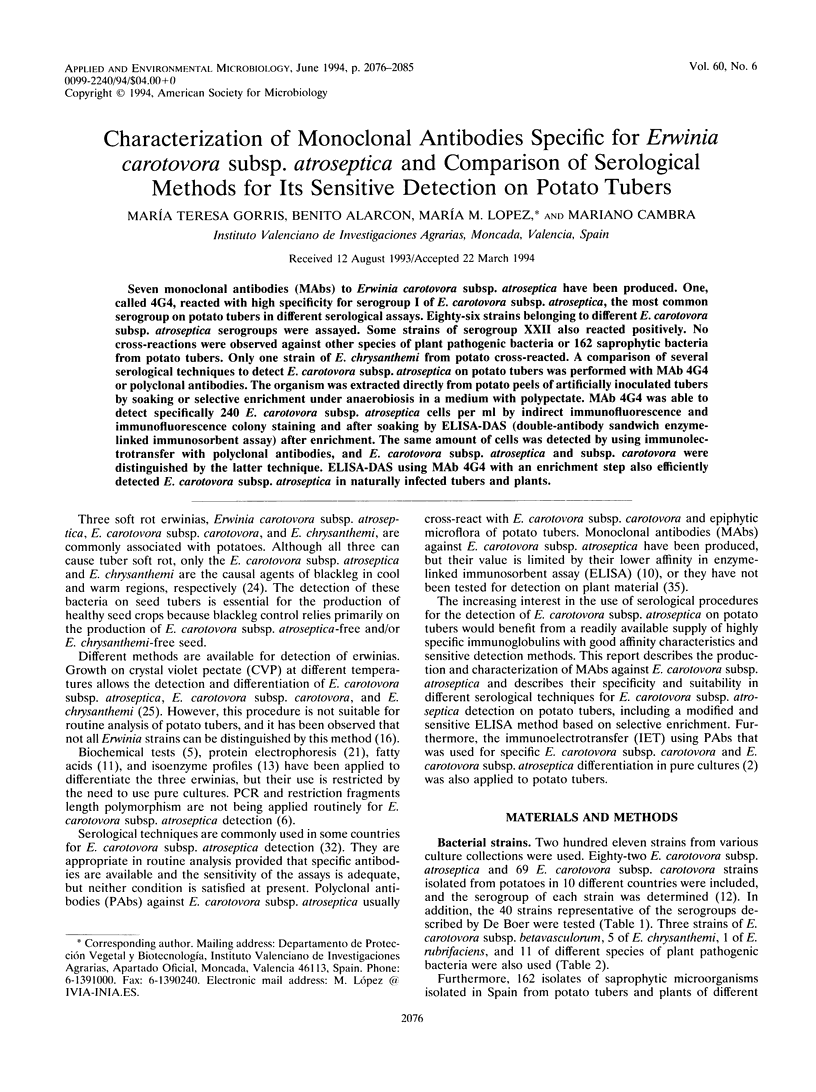
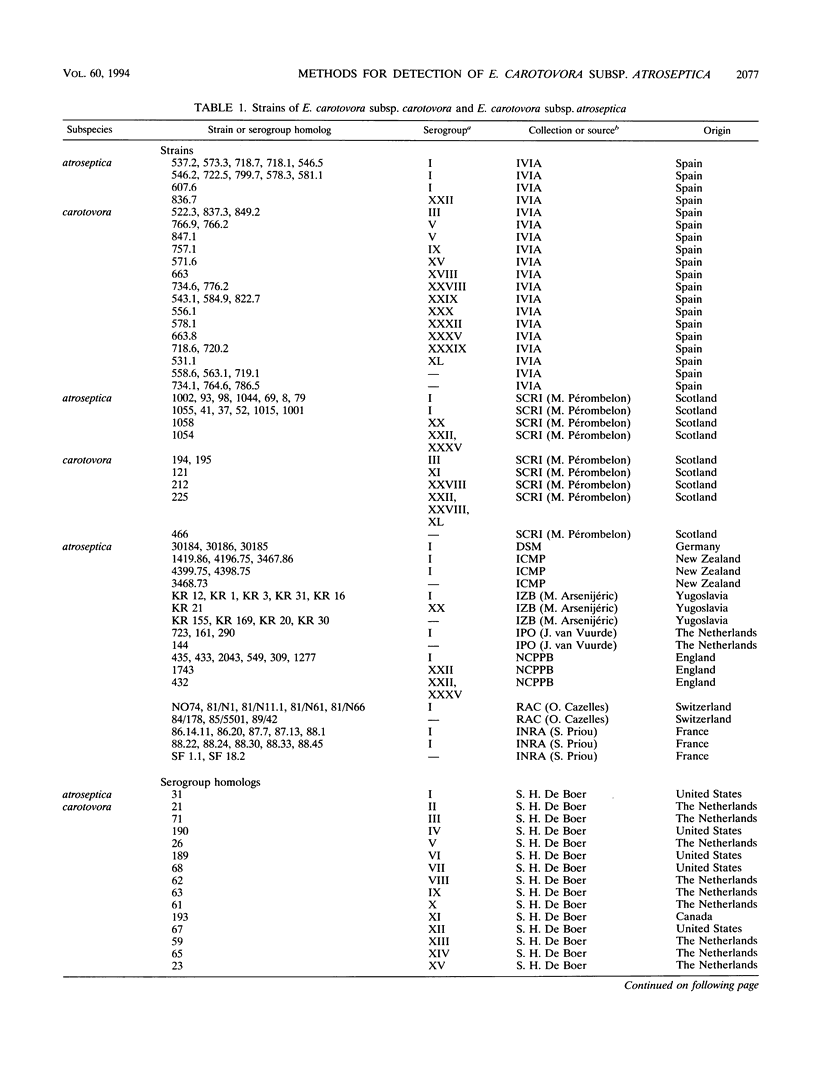
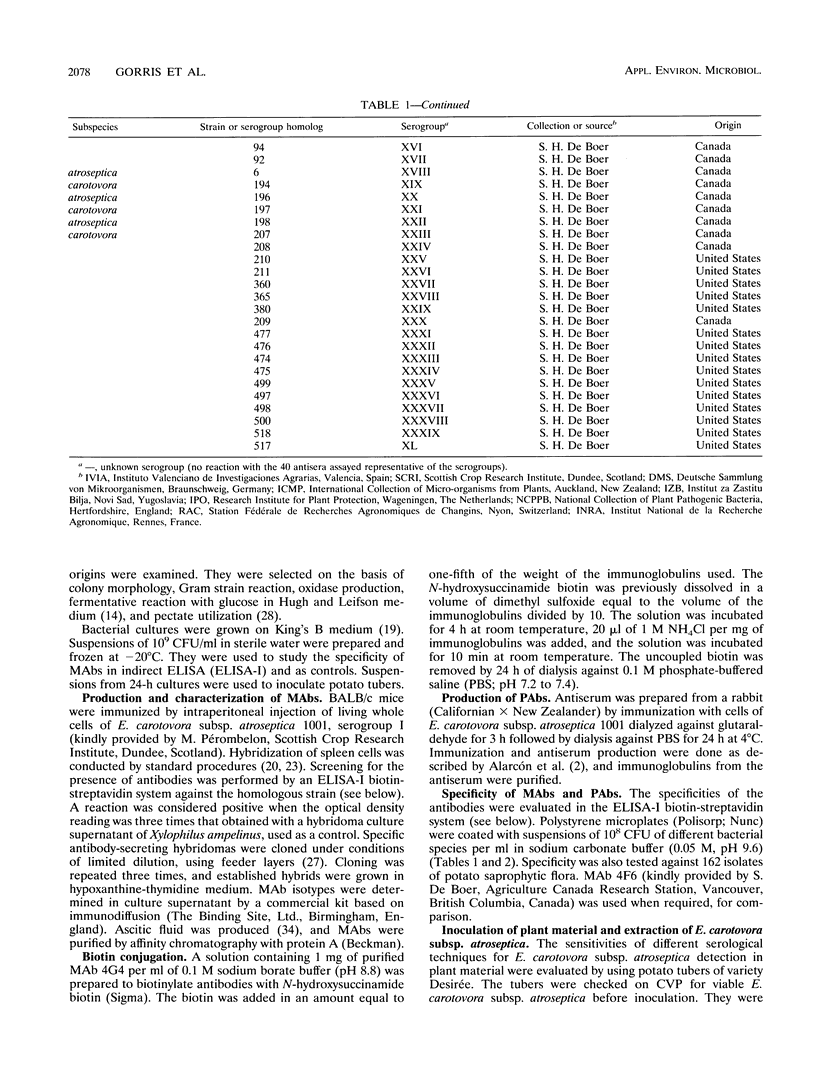
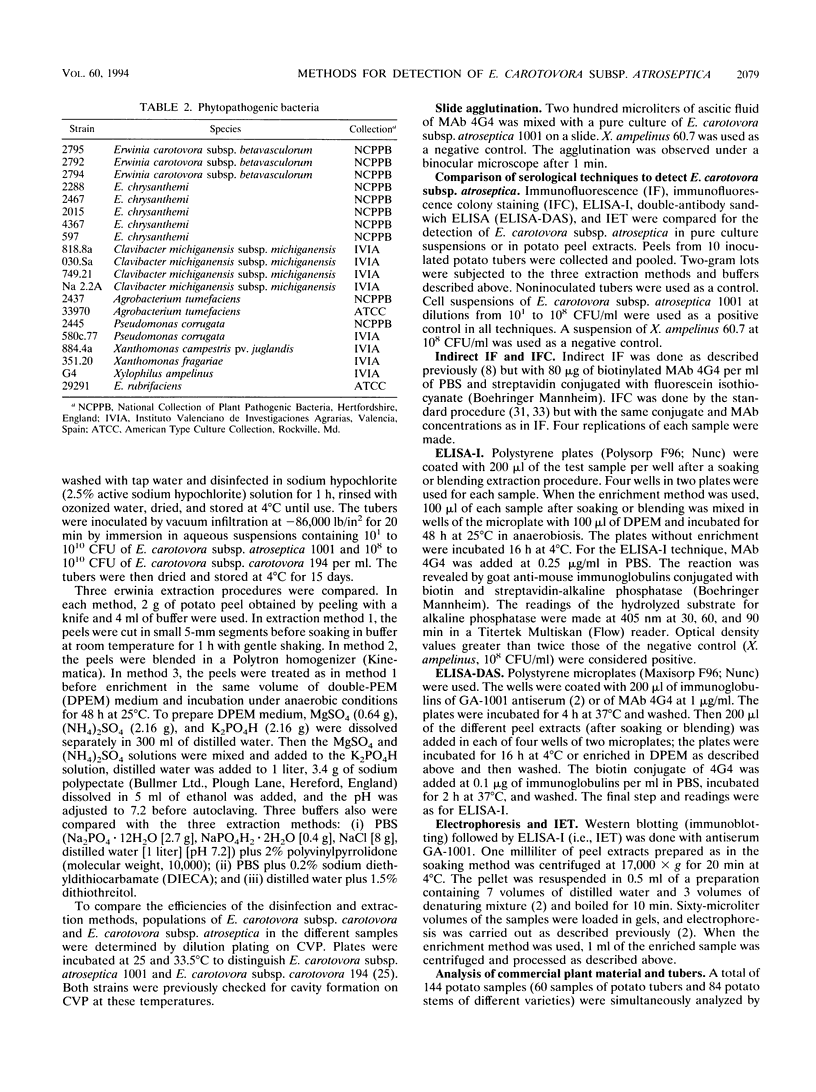
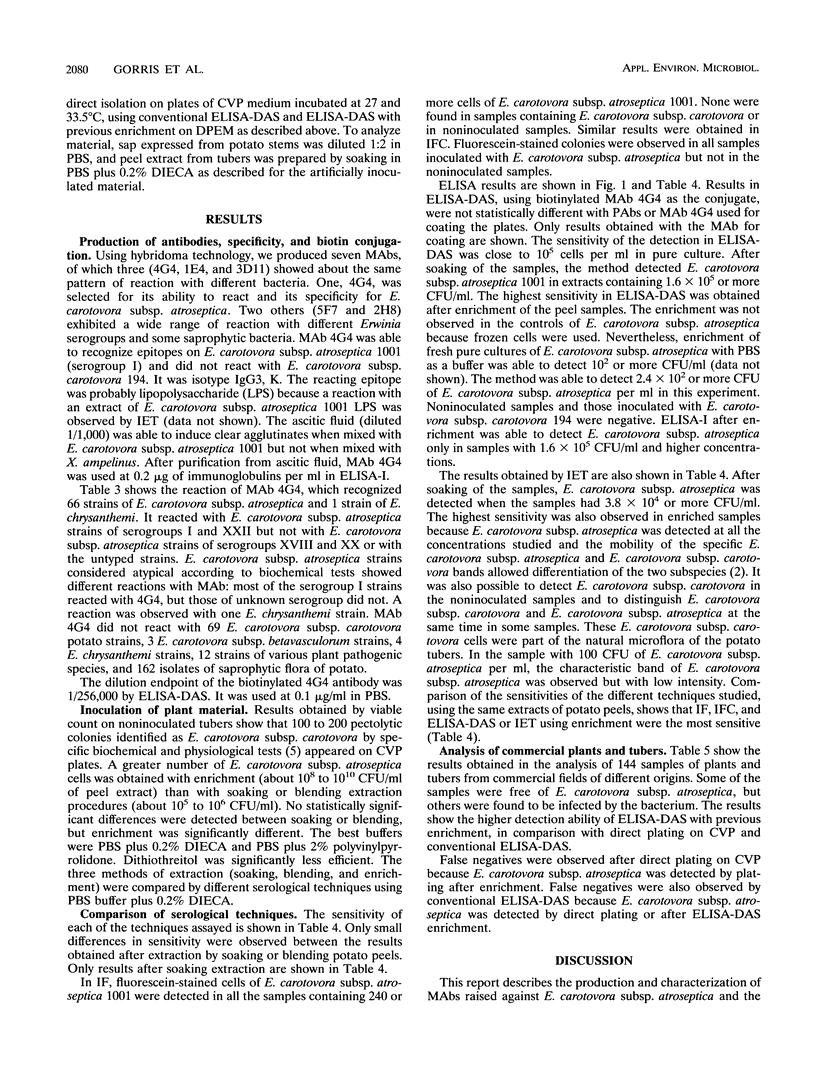
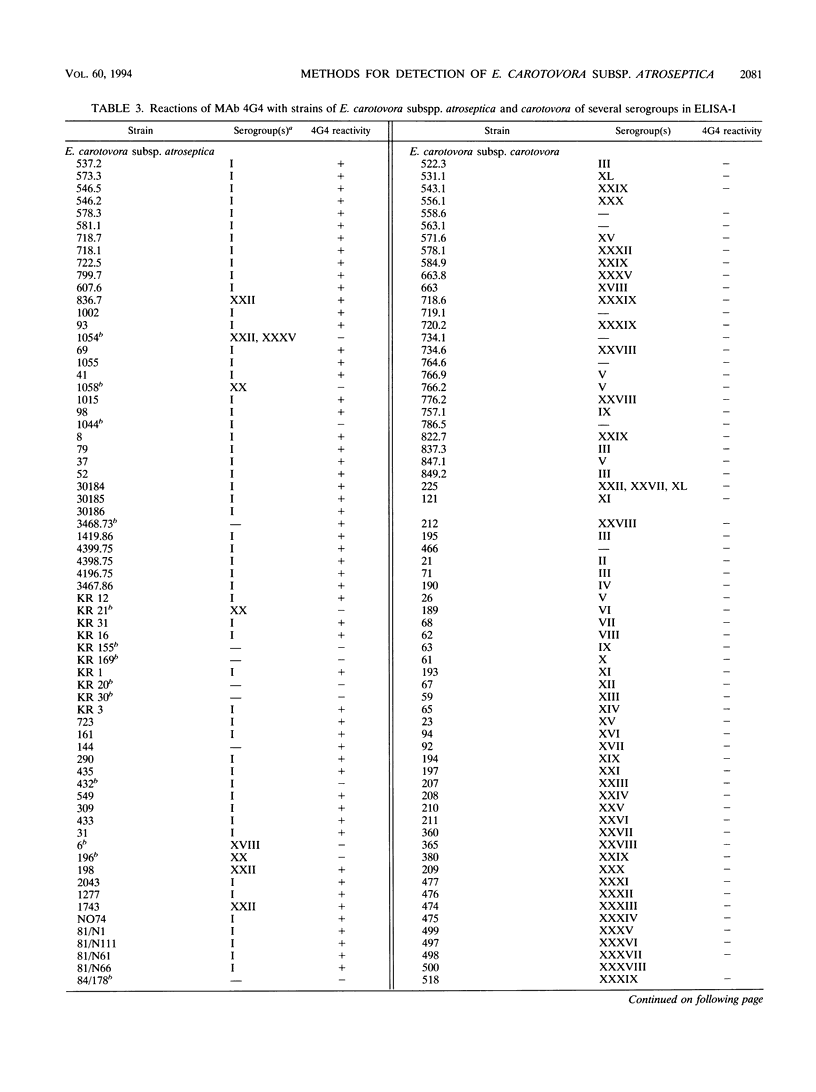
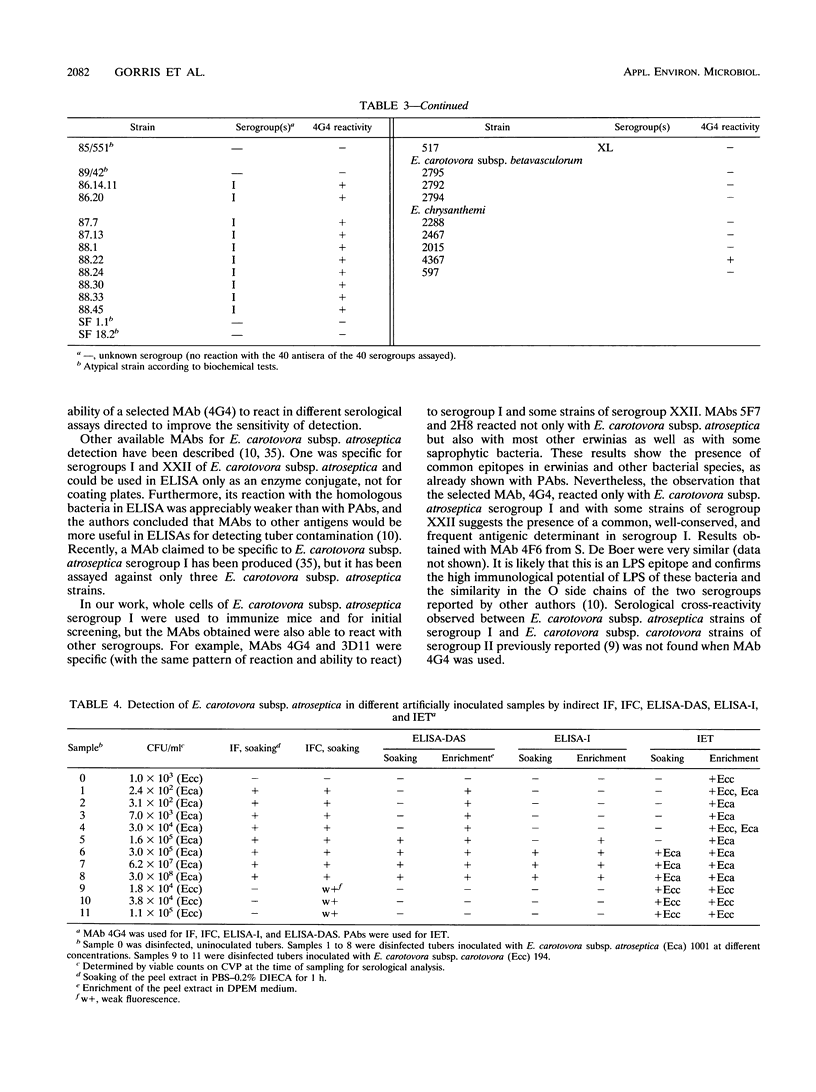
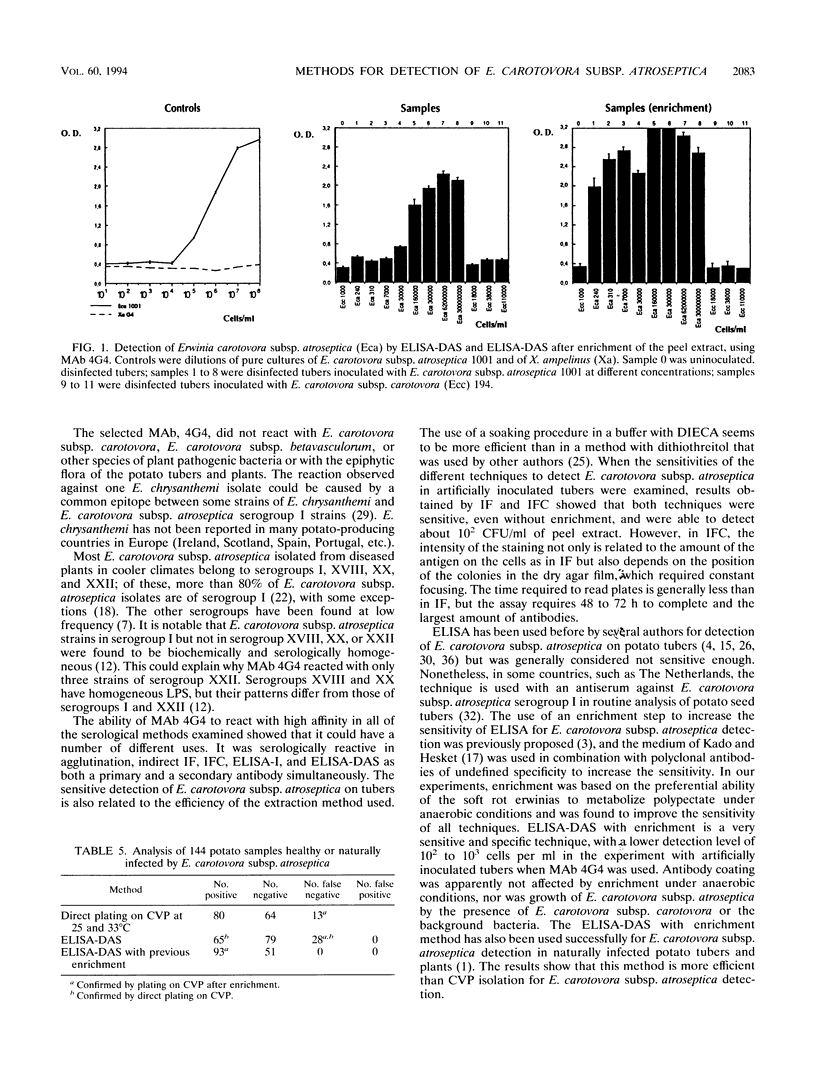
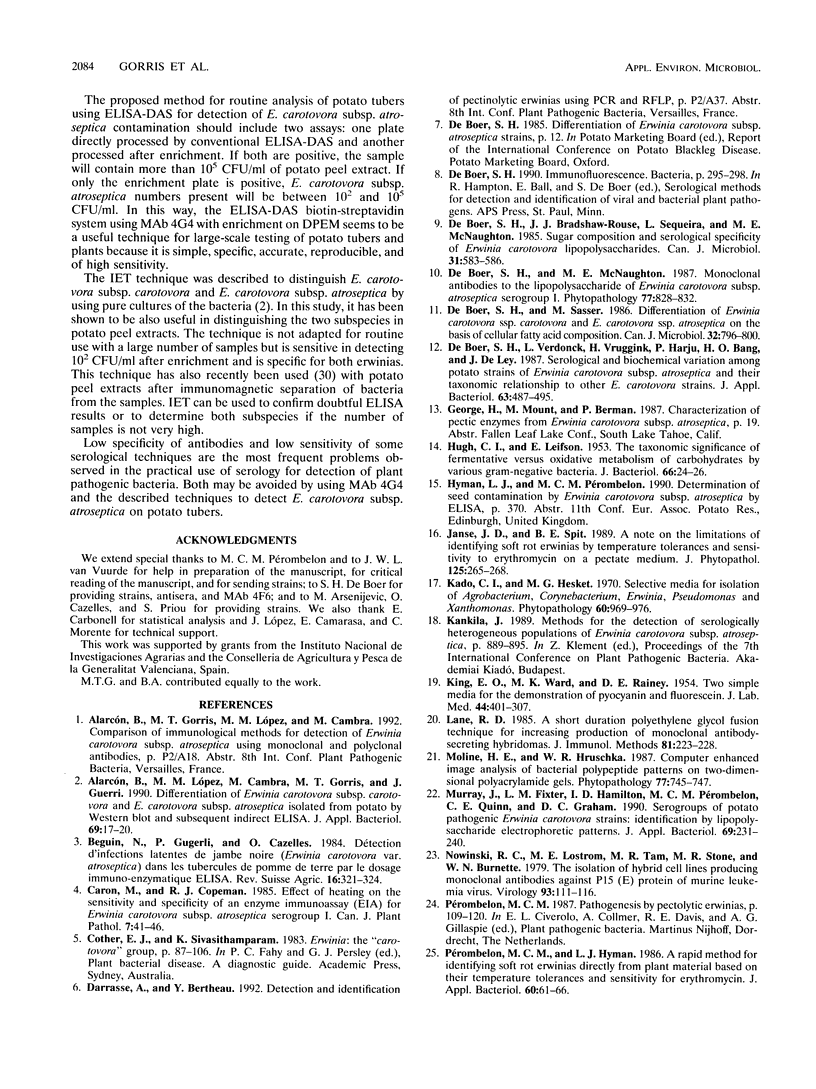
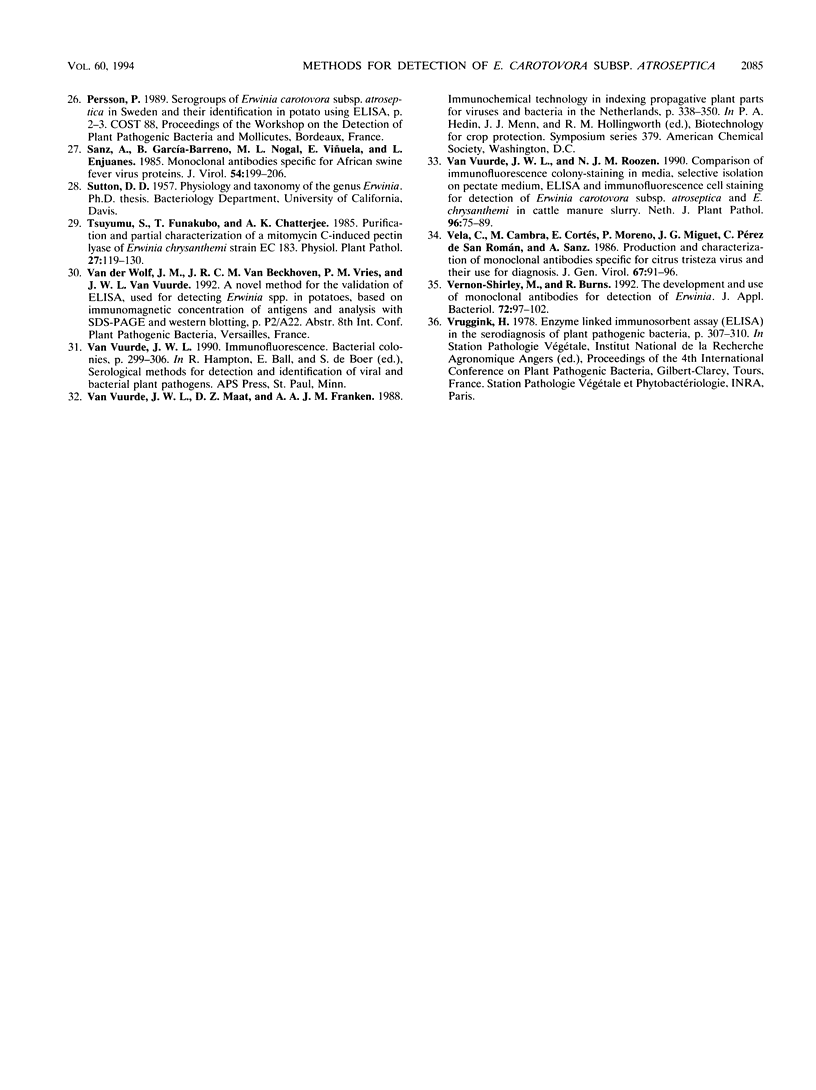
Selected References
These references are in PubMed. This may not be the complete list of references from this article.
- HUGH R., LEIFSON E. The taxonomic significance of fermentative versus oxidative metabolism of carbohydrates by various gram negative bacteria. J Bacteriol. 1953 Jul;66(1):24–26. doi: 10.1128/jb.66.1.24-26.1953. [DOI] [PMC free article] [PubMed] [Google Scholar]
- KING E. O., WARD M. K., RANEY D. E. Two simple media for the demonstration of pyocyanin and fluorescin. J Lab Clin Med. 1954 Aug;44(2):301–307. [PubMed] [Google Scholar]
- Kado C. I., Heskett M. G. Selective media for isolation of Agrobacterium, Corynebacterium, Erwinia, Pseudomonas, and Xanthomonas. Phytopathology. 1970 Jun;60(6):969–976. doi: 10.1094/phyto-60-969. [DOI] [PubMed] [Google Scholar]
- Lane R. D. A short-duration polyethylene glycol fusion technique for increasing production of monoclonal antibody-secreting hybridomas. J Immunol Methods. 1985 Aug 2;81(2):223–228. doi: 10.1016/0022-1759(85)90207-8. [DOI] [PubMed] [Google Scholar]
- Nowinski R. C., Lostrom M. E., Tam M. R., Stone M. R., Burnette W. N. The isolation of hybrid cell lines producing monoclonal antibodies against the p15(E) protein of ecotropic murine leukemia viruses. Virology. 1979 Feb;93(1):111–126. doi: 10.1016/0042-6822(79)90280-0. [DOI] [PubMed] [Google Scholar]
- Sanz A., García-Barreno B., Nogal M. L., Viñuela E., Enjuanes L. Monoclonal antibodies specific for African swine fever virus proteins. J Virol. 1985 Apr;54(1):199–206. doi: 10.1128/jvi.54.1.199-206.1985. [DOI] [PMC free article] [PubMed] [Google Scholar]


